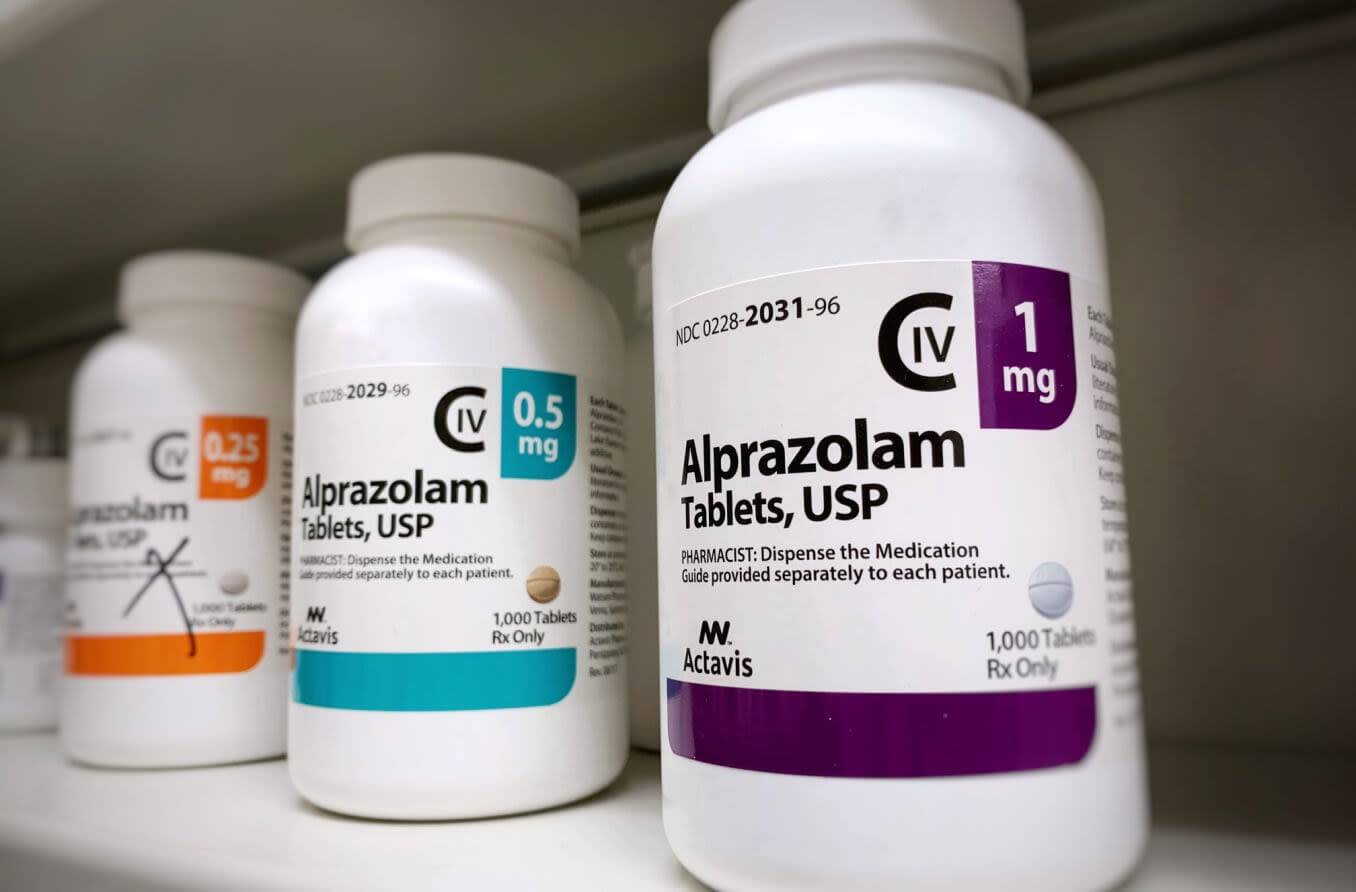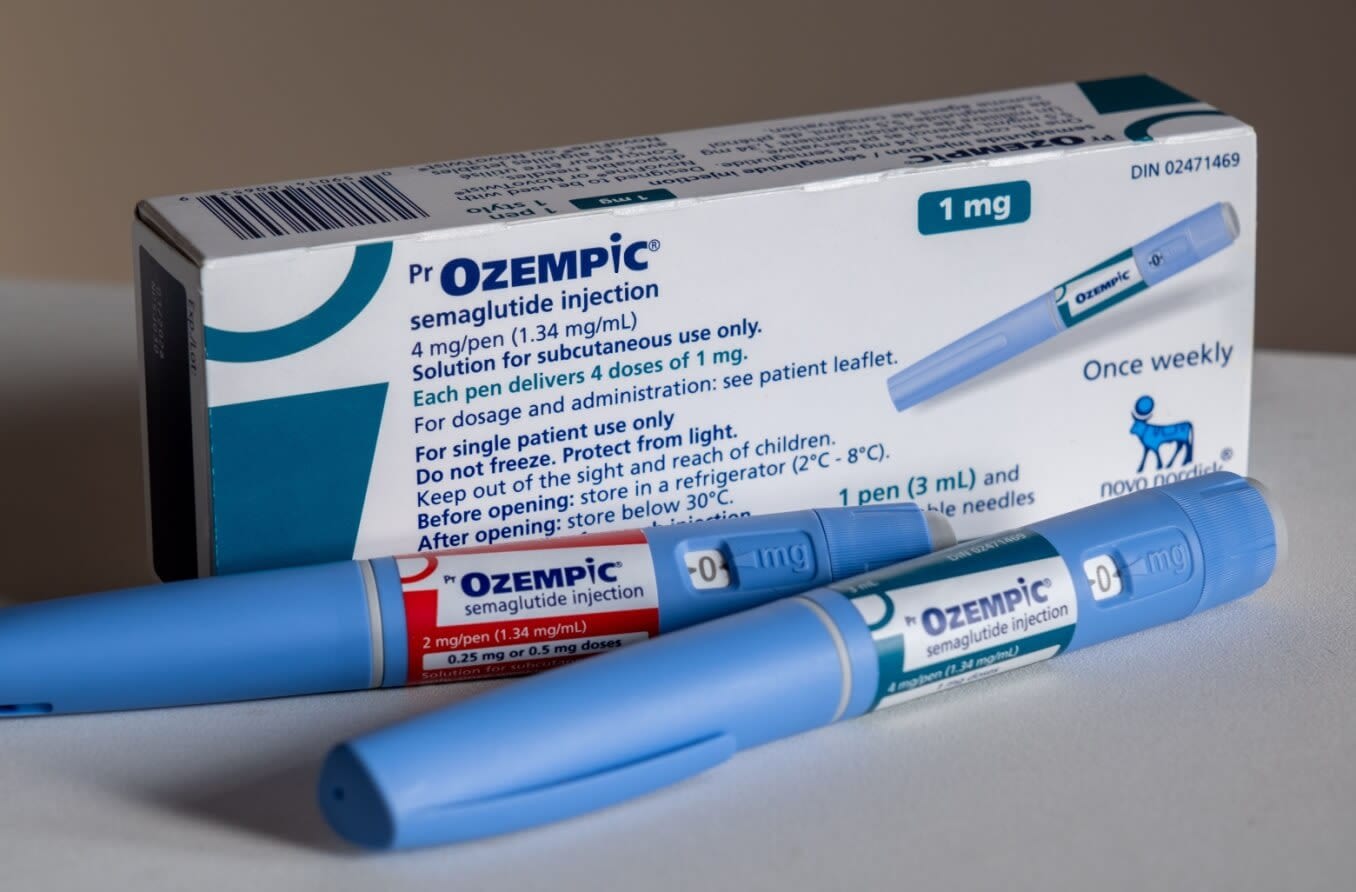Antidepressants and your eyes
Antidepressants are drugs that treat disorders such as depression and anxiety. They may also be prescribed for conditions such as chronic pain or migraine. These drugs can have eye-related side effects such as dry eye, dilated pupils, blur, eye twitching, and, rarely, acute angle-closure glaucoma.
Approximately 13% of Americans aged 18 and over take antidepressant medication. These medications can have side effects that impact the eyes and the entire body. This article focuses on eye-related side effects, but additional systemic side effects such as dry mouth, drowsiness and other issues are not uncommon.
Speak to your healthcare provider or doctor if you are experiencing any issues with your antidepressant medication.
What conditions do antidepressants treat?
The primary use for antidepressants is the treatment of clinical depression in adults. They are also used to treat other conditions, such as anxiety or obsessive-compulsive disorder.
Depression
Depression is a disorder of the brain. Symptoms of depression include chronic feelings of sadness, hopelessness and loss of interest — even in enjoyable activities.
Several factors, such as biochemistry, genetics and life events, can play a role. Depression impacts over 17 million American adults and about 2 million children in the U.S. in a given year.
Antidepressant medications may be prescribed for different types of depression, including:
Major depression – This type of depression has symptoms of depressed mood that interfere with daily life, usually lasting over two weeks.
Persistent depressive disorder – This type of depression has milder symptoms of depression that typically last for at least two years.
Seasonal affective disorder – This form of depression has symptoms that start in the late autumn and early winter and improve during the spring and summer months.
Perinatal depression – This type of depression occurs during pregnancy.
Postpartum depression – This type of depression begins after a woman has a baby.
Depression with symptoms of psychosis – This is a severe type of depression in which there are accompanying symptoms of psychosis, such as delusions or hallucinations.
Anxiety
Anxiety is a prevalent mental health issue in the United States. There are several types of anxiety disorders, but in general, symptoms include chronic feelings of fear, worry and dread that do not get better over time. Over 40 million American adults — nearly 20% — have an anxiety disorder. About 7% of children aged 3-17 are diagnosed with anxiety issues each year.
Two of the primary treatments for anxiety disorders are the antidepressant classes of drugs known as selective serotonin reuptake inhibitors (SSRIs) and serotonin norepinephrine reuptake inhibitors (SNRIs).
Other conditions treated by antidepressant medications
Antidepressants may be used to treat other conditions besides depression and anxiety. Some studies have found that only about half of antidepressant prescriptions are written for depression.
Physicians also prescribed antidepressants for conditions such as:
Obsessive-compulsive disorder (OCD)
Panic disorder
Post-traumatic stress disorder (PTSD)
Social phobia
Insomnia
Pain
Bulimia
Common eye-related side effects of antidepressants
Antidepressants increase the levels of chemical messengers — called neurotransmitters — in the brain. These neurotransmitters are important in regulating your mood and behavior. They also play a role in memory, sleep, pain regulation, appetite, etc.
The most common neurotransmitters targeted by antidepressant medications are:
Serotonin
Norepinephrine
Dopamine (less common)
After a neurotransmitter is released, nerve cells in your brain usually reabsorb it in a process called reuptake . Antidepressant medications typically work by inhibiting reuptake. This means that the neurotransmitter's effect is prolonged and can have a greater impact on your brain and, as a result, mood and behavior.
However, these increased levels of neurotransmitters can impact the eyes and other body systems. Some antidepressants also change the level of other chemical messengers — such as acetylcholine — leading to even more side effects.
There are different classes of antidepressant medications:
Selective serotonin reuptake inhibitors (SSRIs)
Serotonin norepinephrine reuptake inhibitors (SNRIs)
Tricyclic antidepressants
Norepinephrine and dopamine reuptake inhibitors (NDRIs) such as Wellbutrin
Miscellaneous antidepressants such as Trintellix and Remeron
Monoamine oxidase inhibitors (MAOIs)
Each class of antidepressant medication works a bit differently and has different potential side effects on the eyes depending on which neurotransmitter receptors it acts on.
Dry eyes
Antidepressants can cause dry eye symptoms. These symptoms are thought to occur due to tear film instability and the breakdown of the eye’s outer surface layer caused by higher serotonin levels in the tears.
Symptoms of dry eye include:
Itching
Discomfort wearing contact lenses
Redness
Light sensitivity
Extra watery eyes (due to excessive tear production from dryness and irritation)
Tricyclic antidepressants (TCAs) such as Elavil can cause dry eye because they are anticholinergic — they inhibit the action of the neurotransmitter acetylcholine. This neurotransmitter plays a role in the secretion of tears by the glands in the eyes.
Dry eyes can result from anticholinergic medications because they reduce acetylcholine levels, leading to decreased secretion of the tear film's watery (aqueous) and mucus layers.
SSRIs and SNRIs have a weaker effect on acetylcholine receptors than TCAs. So, while SSRIs and SNRIs affect the tear film, they affect it less than TCAs. SNRIs, in particular, have been found in some studies to have an even lesser impact on tear film than SSRIs.
READ MORE: Dry eyes: Symptoms and causes
Dilated pupils
A dilated pupil can cause light sensitivity and make your vision blurry.
The anticholinergic effects of medications such as TCAs can dilate the pupils by causing paralysis of the iris sphincter muscle, which is the muscle that makes the pupil smaller. This paralysis results in pupil dilation.
The iris sphincter muscle is also relaxed by serotonin. Since SSRIs and SNRIs increase the level of serotonin, these antidepressants also cause the pupil to dilate.
Difficulty focusing up close
The ciliary muscle changes the curvature of the eye’s lens, allowing you to focus clearly on near objects. Some antidepressants act on specific neurotransmitter receptors on the ciliary muscle and can impair its function, leading to blurry vision up close.
Slightly higher risk of acute angle-closure glaucoma (AACG) and increased eye pressure
SSRIs, SNRIs and TCAs can increase the production of a fluid called aqueous humor that circulates in the eye to provide nourishment. An increase in aqueous humor level can contribute to higher eye pressure, particularly because these medications also cause the pupil to dilate. Dilation can narrow the area where the fluid drains — also known as the drainage angle.
People with a naturally narrow drainage angle are at an increased risk of an acute angle-closure attack. This means the drainage angle can fully or mostly close when a medication such as an antidepressant dilates the pupil.
An increase in aqueous humor level combined with limited drainage can cause the fluid to build up and increase eye pressure. The high pressure can damage the optic nerve — which connects the eye and the brain — and may lead to long-term vision loss.
If you notice symptoms such as eye pain and vision changes with headache and nausea, call your doctor immediately. These symptoms may indicate acute angle-closure glaucoma (AACG), a medical emergency.
READ MORE: Glaucoma: Types, causes, symptoms and treatment
Other possible side effects
Some studies have found a reduction in the risk of primary open-angle glaucoma, the most common form of glaucoma, in people using antidepressants. Unlike AACG, it is not directly related to closed or narrow drainage angles.
A recent study showed that Prozac (fluoxetine) blocks inflammation that can damage the macula in age-related macular degeneration (AMD). Clinical trials are necessary to test Prozac as a potential treatment for dry AMD.
There have also been studies that have found an association between SSRIs and SNRIs and an increased risk of cataracts. However, factors such as family history, smoking, sunlight exposure and steroid use may have impacted the findings. Additional research is needed to understand this link better.
Rare side effects
Some case studies have reported rare ocular side effects of antidepressant medications, such as:
Involuntary eye muscle contractions and eye twitching
Involuntary eye movements (nystagmus)
Swelling around the eyes (periorbital edema) with Prozac
SSRIs: Paxil, Lexapro, Zoloft, Celexa, Prozac and Luvox
Selective serotonin reuptake inhibitors work by slowing the reabsorption of serotonin, increasing its levels in the brain. SSRIs are the most widely prescribed type of antidepressant and are preferred because they cause fewer side effects than many other antidepressants. They have minimal impact on neurotransmitters such as norepinephrine or dopamine.
SSRIs can have eye-related side effects such as:
Mild dry eyes
Pupil dilation (which can cause light sensitivity)
Possible increased risk of cataract development
Higher risk of increased eye pressure and AACG
Blurry vision
This class of drugs is FDA-approved to help treat conditions such as depression, anxiety and bulimia.
The most common SSRIs include:
Paroxetine (Paxil)
Escitalopram (Lexapro)
Sertraline (Zoloft)
Citalopram (Celexa)
Fluoxetine (Prozac)
Fluvoxamine (Luvox)
The term Paxil eyes generally refers to a tired or far-away look some people may have when taking Paxil. Eye and vision problems haven’t been reported to be more common with Paxil than with other SSRIs.
SNRIs: Cymbalta, Effexor, Pristiq, Strattera, Fetzima and Savella
Serotonin and norepinephrine reuptake inhibitors are also commonly prescribed for depression, anxiety and fibromyalgia. They work by slowing serotonin and norepinephrine absorption, increasing the levels of these neurotransmitters in the brain.
SNRIs typically have similar eye-related side effects as SSRIs:
Pupil dilation (which can cause light sensitivity)
Higher risk of increased eye pressure and AACG
Mild dry eyes
Blurry vision
Serotonin and norepinephrine reuptake inhibitors are FDA-approved to help treat conditions such as depression, anxiety and chronic pain. Like SSRIs, they have fewer side effects than TCAs or MAOIs.
The most common SNRIs include:
Duloxetine (Cymbalta, Drizalma, Irenka)
Venlafaxine (Effexor)
Desvenlafaxine (Khedezla, Pristiq)
Atomoxetine (Strattera)
Levomilnacipran (Fetzima)
Milnacipran (Savella)
TCAs: Elavil, Aventyl, Norpramin, Vivactil, Asendin, Norpramin
Tricyclic antidepressants' main mechanism of action is to increase the levels of norepinephrine in your brain. These drugs also increase the level of serotonin. TCAs have many side effects because they also act on additional receptors in the body, such as acetylcholine and histamine receptors, which may result in eye-related side effects such as:
Pupil dilation (which can cause light sensitivity)
Higher risk of increased eye pressure and AACG
Moderate to severe dry eyes
Blurry vision
Muscle twitching (such as eyelid)
This class of antidepressants is older. It is no longer as commonly prescribed because it has more side effects and an increased potential for overdose. It is typically used for treatment-resistant depression and anxiety, sleep disorders and chronic pain.
The most common TCAs include:
Amitriptyline (Elavil, Vanatrip)
Nortriptyline (Aventyl, Pamelor)
Desipramine (Norpramin)
Protriptyline (Vivactil)
Amoxapine (Asendin)
Desipramine (Norpramin)
Imipramine (Tofranil)
NDRIs: Wellbutrin
Wellbutrin (bupropion hydrochloride) is in the norepinephrine and dopamine reuptake inhibitor class of antidepressants. Its mechanism of action is not fully understood, but it appears to slow some absorption of norepinephrine and dopamine.
Wellbutrin can have eye-related side effects such as blurry vision. Acute angle-closure is also a risk for some individuals, so it is important to note symptoms such as:
Eye pain
Loss of vision
Seeing halos around lights
Wellbutrin is approved for the treatment of major depressive disorder as well as seasonal affective disorder (SAD).
Miscellaneous antidepressants: Trintellix and Remeron
These medications also have the potential for eye-related side effects due to their impact on the level of neurotransmitters in the body and eye.
Trintellix (vortioxetine) is considered to be a miscellaneous antidepressant, but it is also sometimes classified as an SSRI.
Remeron (mirtazapine) is in a class of tetracyclic antidepressants (TeCA). It increases the release of serotonin and norepinephrine.
Both of these medications can have eye-related side effects such as:
Dry eyes
Pupil dilation (which can cause light sensitivity)
Blurred vision
Angle-closure glaucoma in individuals who are at higher risk
MAOIs: Emsam, Marplan, Nardil, Parnate
Monoamine oxidase inhibitors (MAOIs) prevent the breakdown of multiple neurotransmitters in your brain, such as serotonin, norepinephrine and dopamine.
Most MAOIs tend to have many food and drug interactions. People who take this medication must remain on a diet with strict restrictions.
This medication can have eye-related side effects such as:
Dry eye
Twitching eyelids
Side-to-side eye movements
The most common MAOIs include:
Selegiline (Emsam)
Isocarboxazid (Marplan)
Phenelzine (Nardil)
Tranylcypromine (Parnate)
Emsam is a newer MAOI available as a patch. The lower-dosage patch allows you to continue a normal diet.
What are brain zaps?
Brain zaps are sometimes a side effect of discontinuing or decreasing an antidepressant. They can also occur if a dose of medication is missed.
This phenomenon is often described as a sensation that feels like an electrical shock in the brain. Some people report hearing sounds such as buzzing and may even feel dizzy or experience a brief blackout. Lateral (side) eye movements are the most-reported trigger for brain zaps.
While they can be uncomfortable or disturbing, there is no evidence that these zaps harm the brain or eyes in any way. To minimize the likelihood of brain zaps, tapering the dosage of antidepressant medication is recommended. Over time, the sensation should gradually go away.
Sertraline (Zoloft), venlafaxine (Effexor) and escitalopram (Lexapro) are the most commonly reported medications associated with brain zaps. Duloxetine (Cymbalta), desvenlafaxine (Pristiq) and many others have also been found to cause brain zaps.
When to see a doctor
Maintaining regular communication with your healthcare team is critical when taking antidepressant medication.
Side effects such as dry eye are not unusual when taking antidepressants. Many over-the-counter and prescription treatments for dry eye are available. Rewetting drops can often provide relief.
If you are having difficulty focusing at near since starting antidepressant medication, your eye doctor can recommend eyeglasses to help you see clearly. In some cases, these symptoms can gradually improve on their own.
Acute angle-closure glaucoma is not a common complication, but it can occur. Call your doctor immediately if you experience the following symptoms of AACG:
Sudden onset of severe eye pain
Blurred vision with a headache
Multi-colored halos around lights
Nausea and vomiting
Routine, comprehensive eye exams play an important role in maintaining eye health. If you are taking antidepressants and experience eye-related side effects, discuss them with your healthcare provider and eye doctor. It is important to consult your doctor before changing your medication dosage or regimen.






